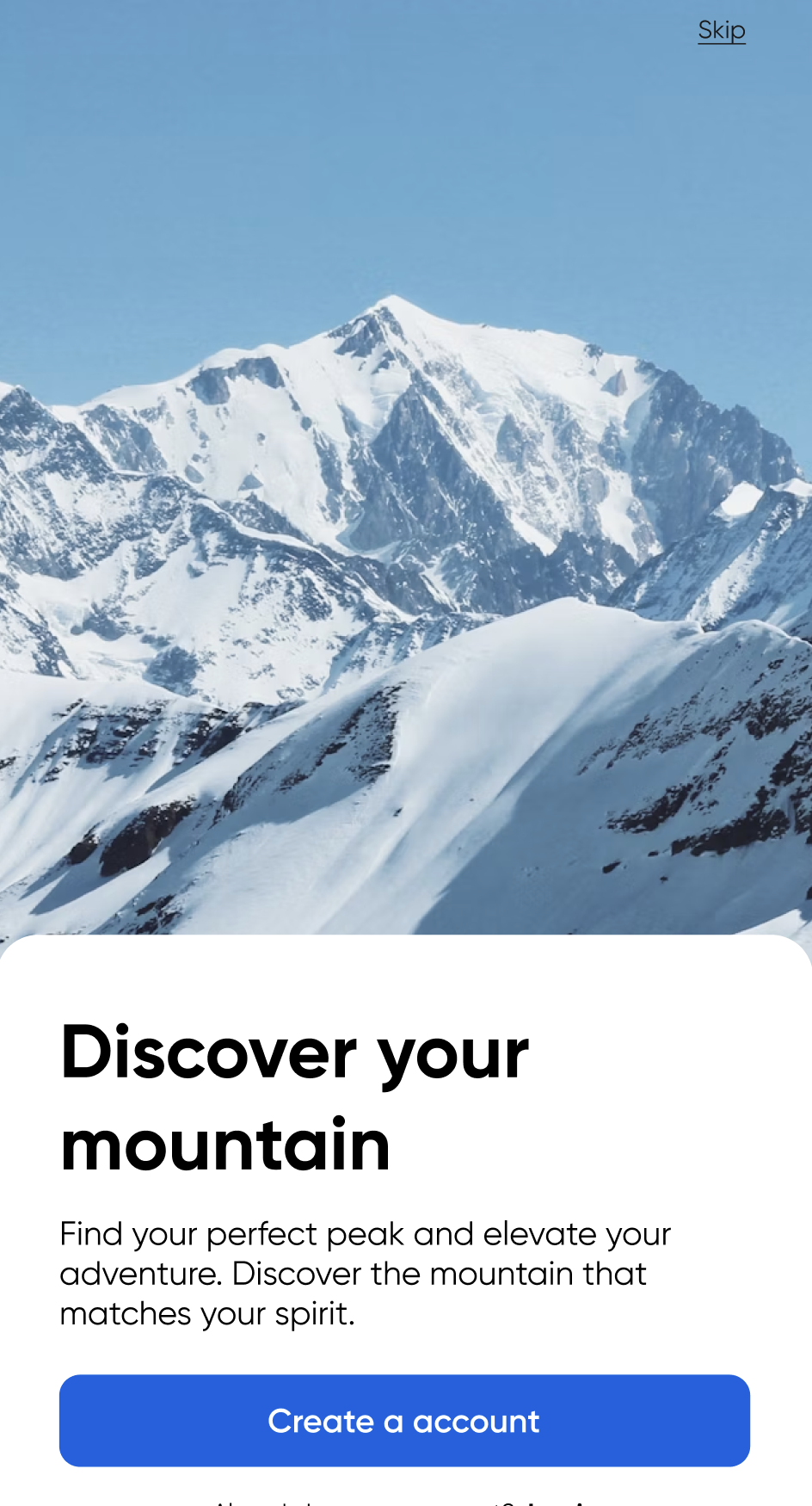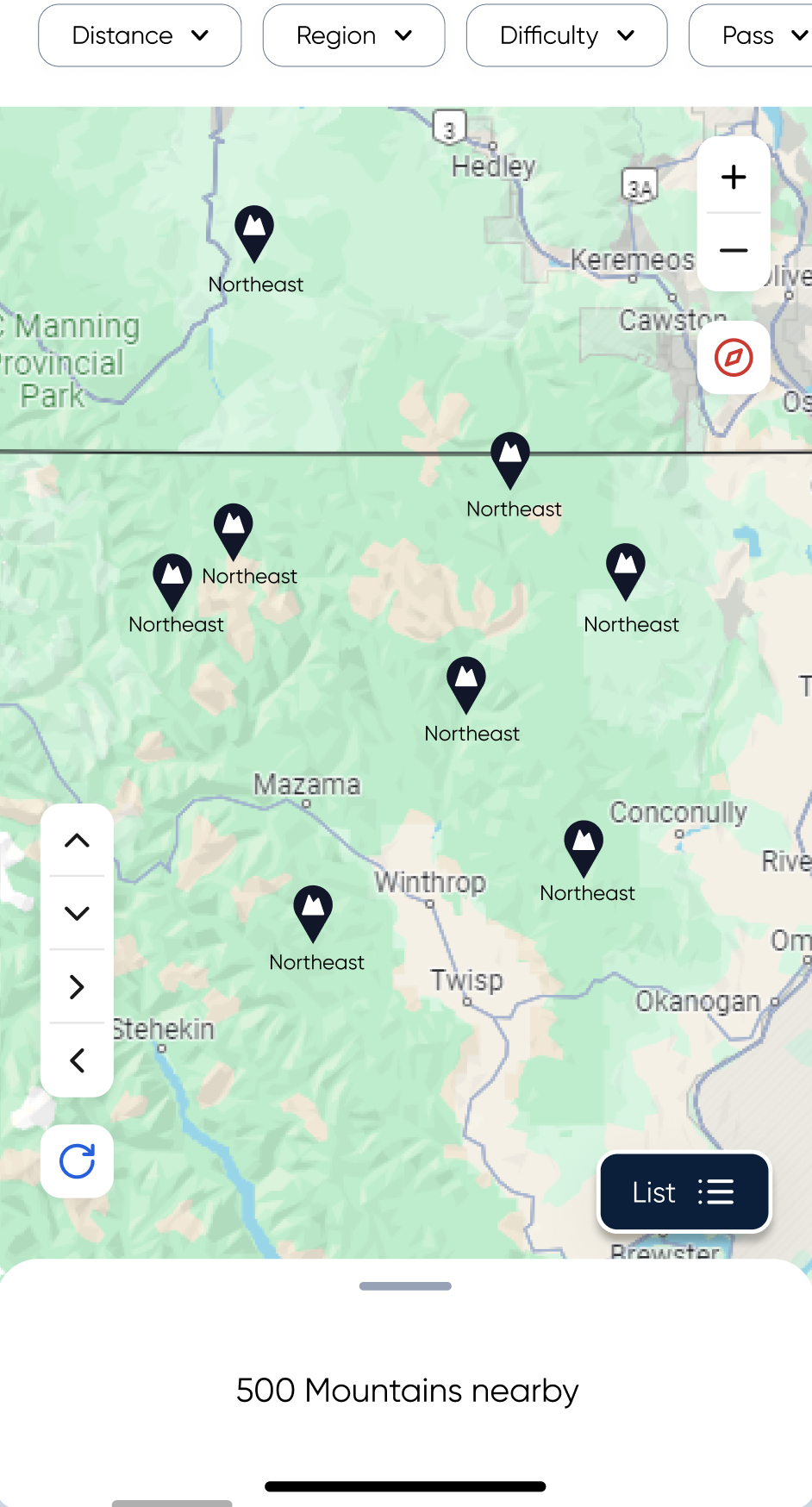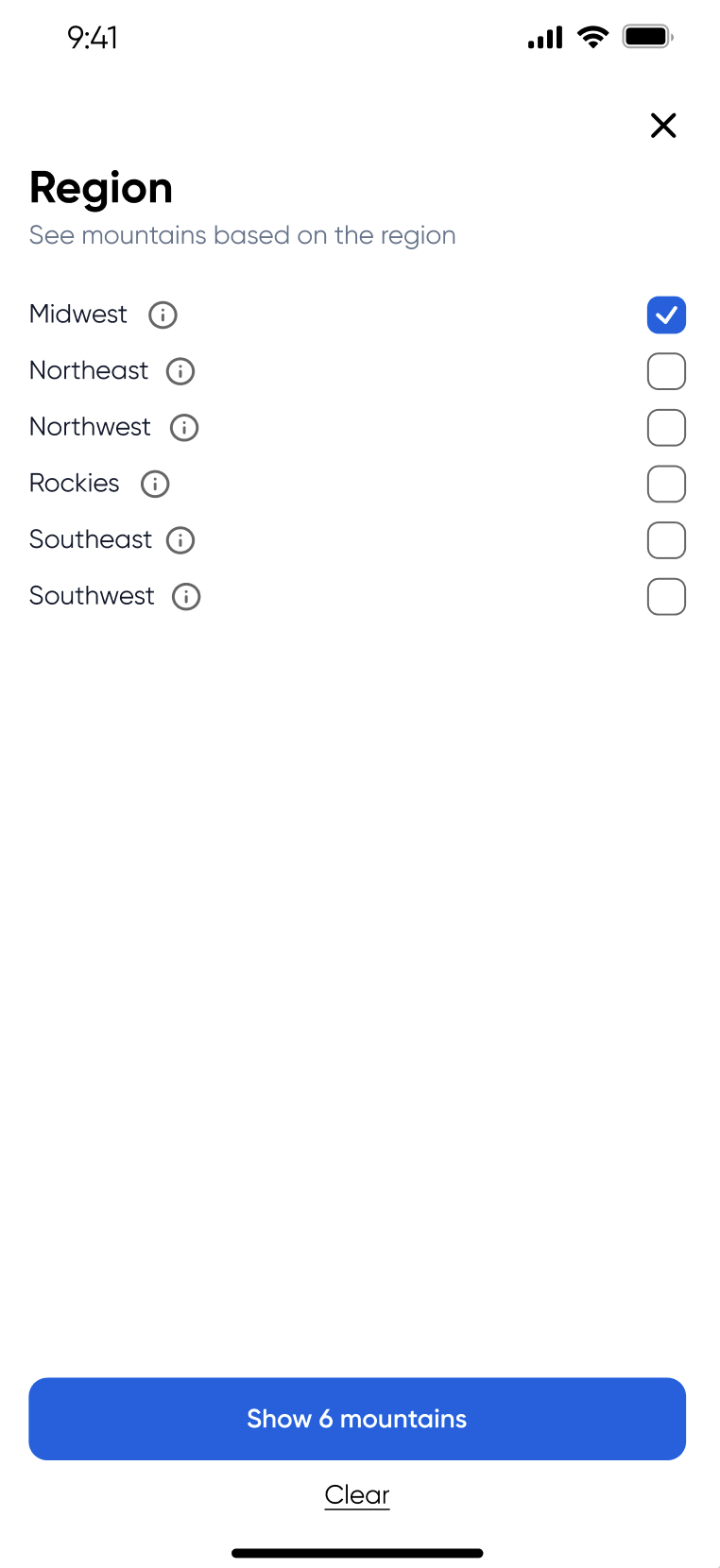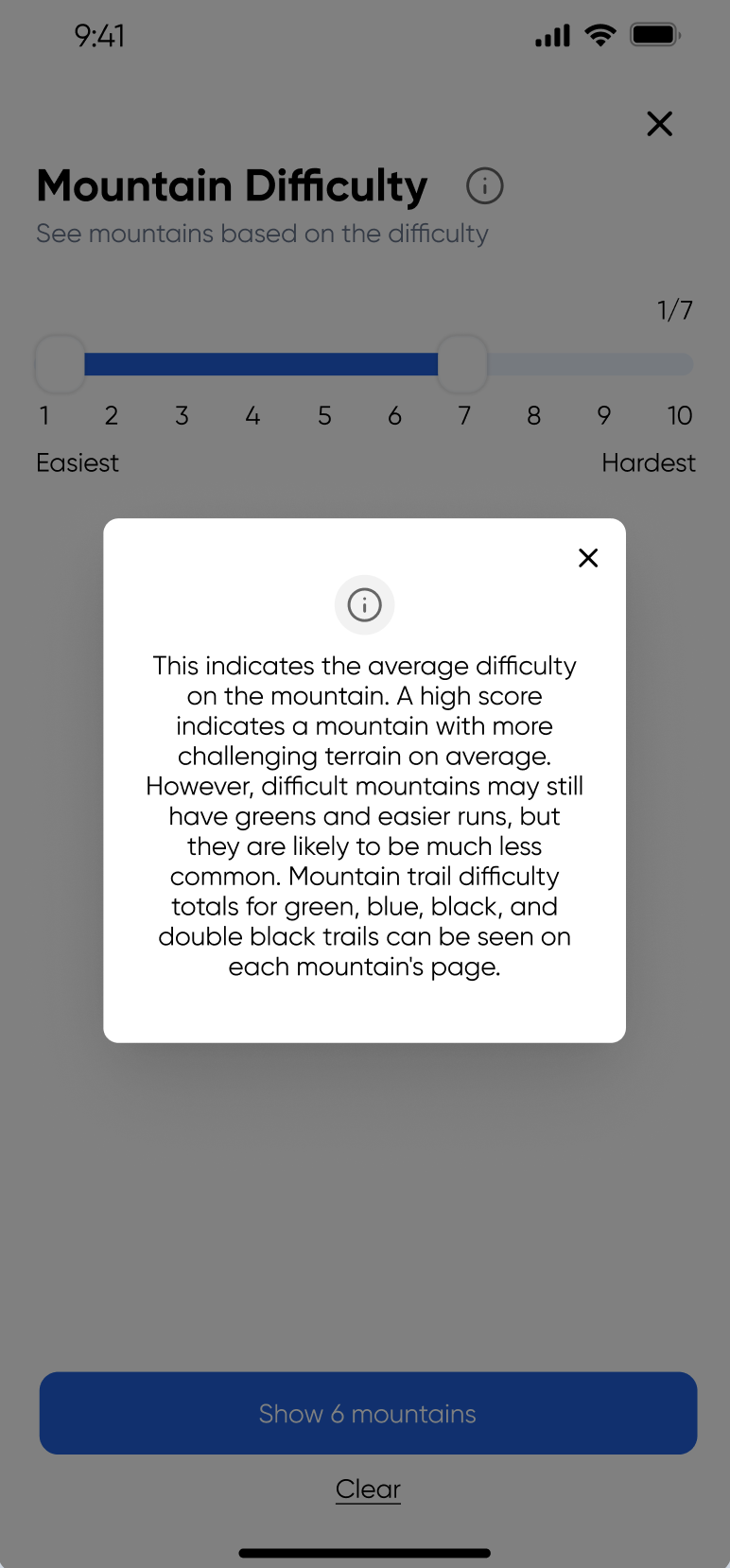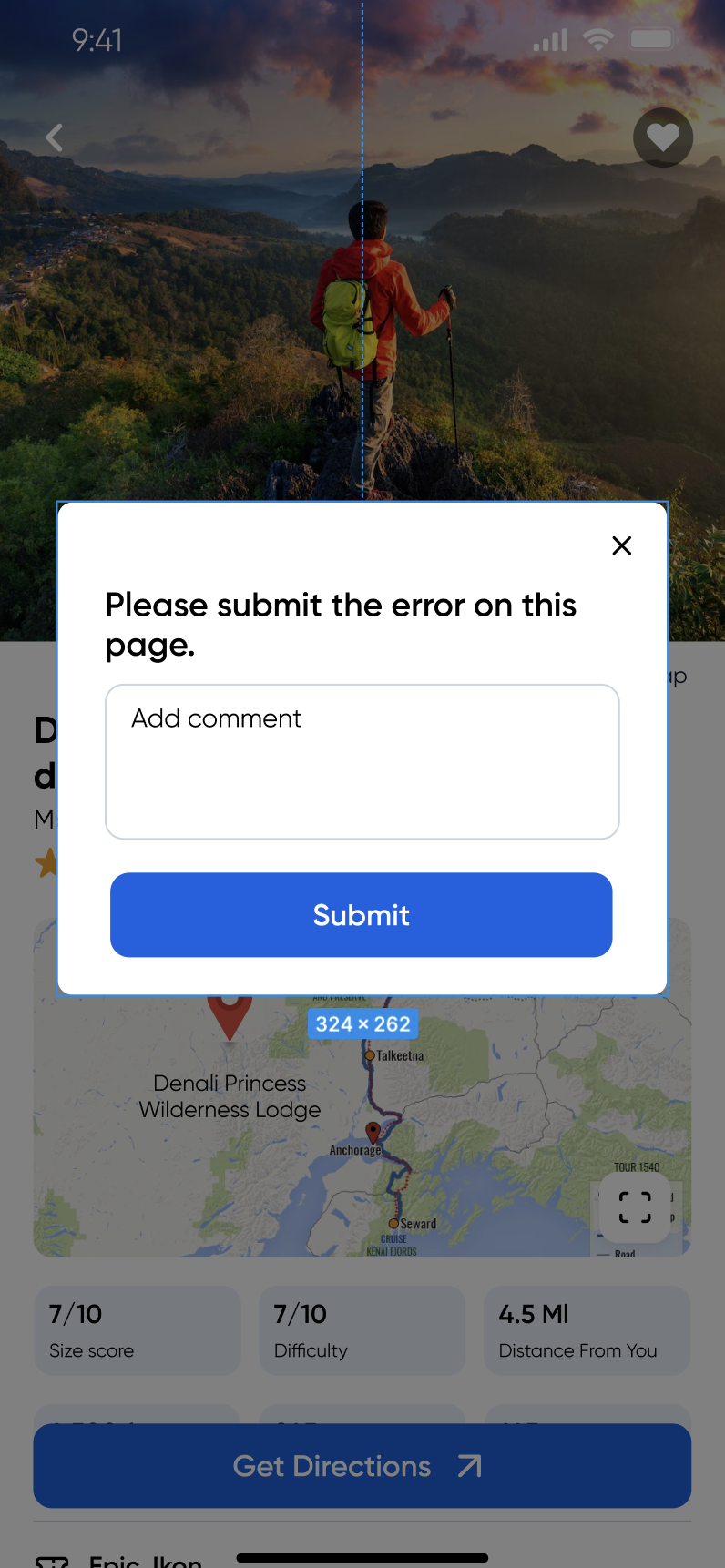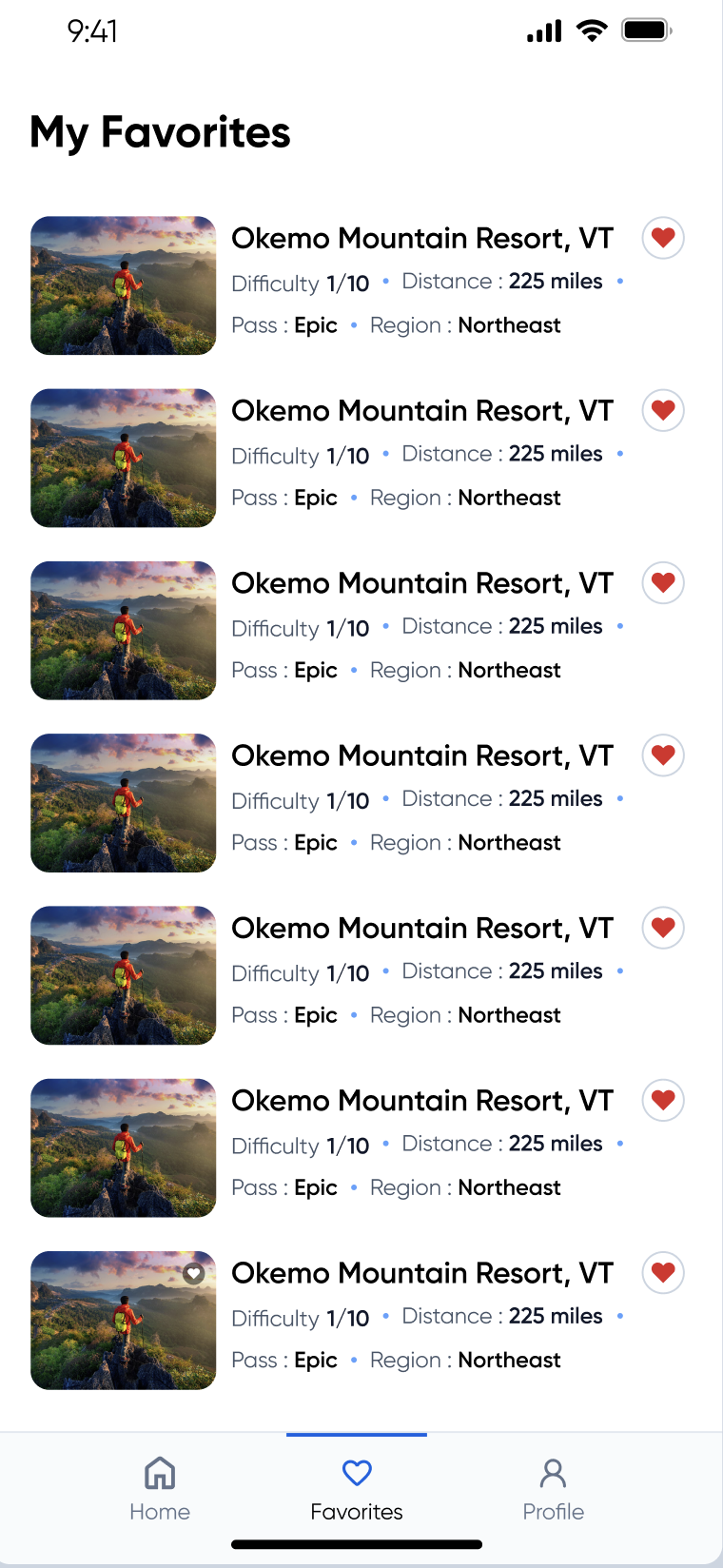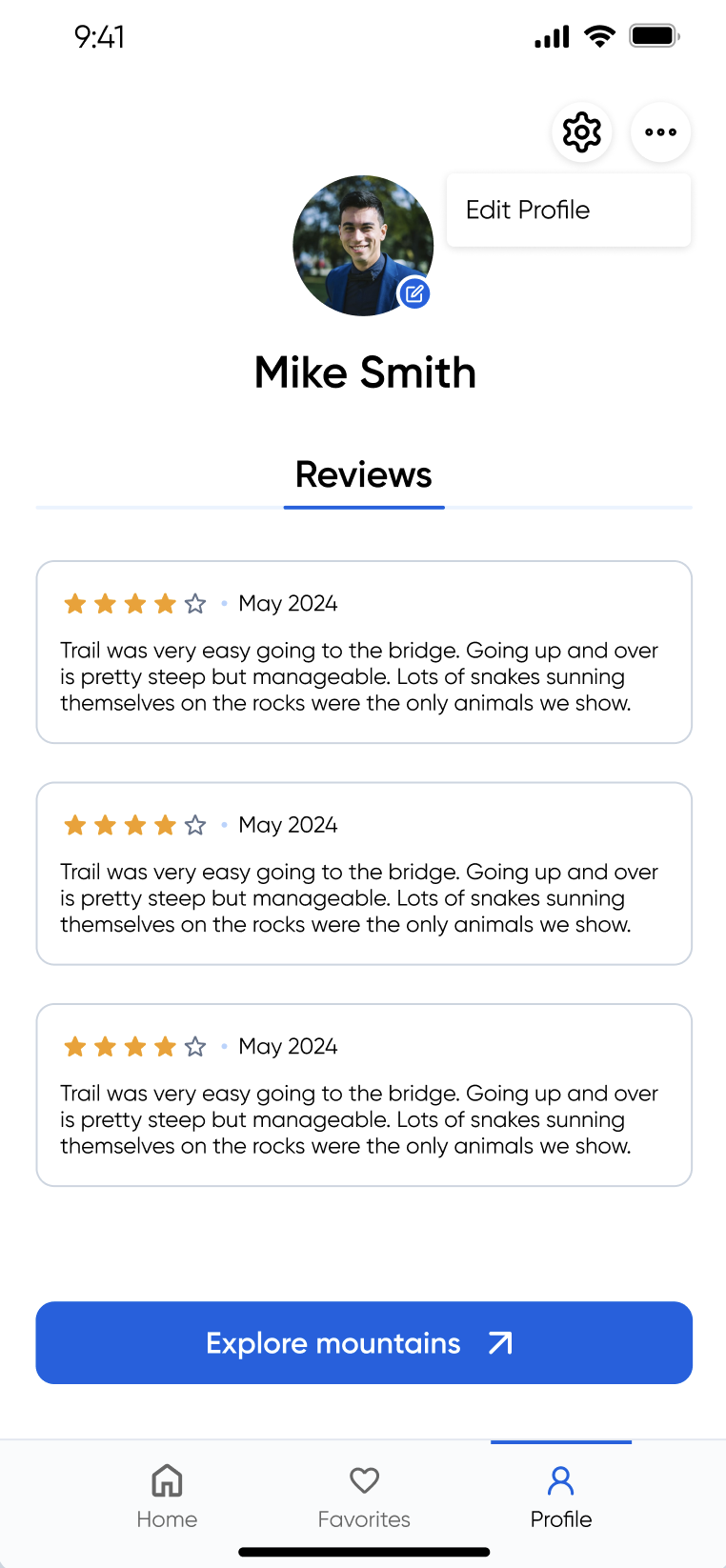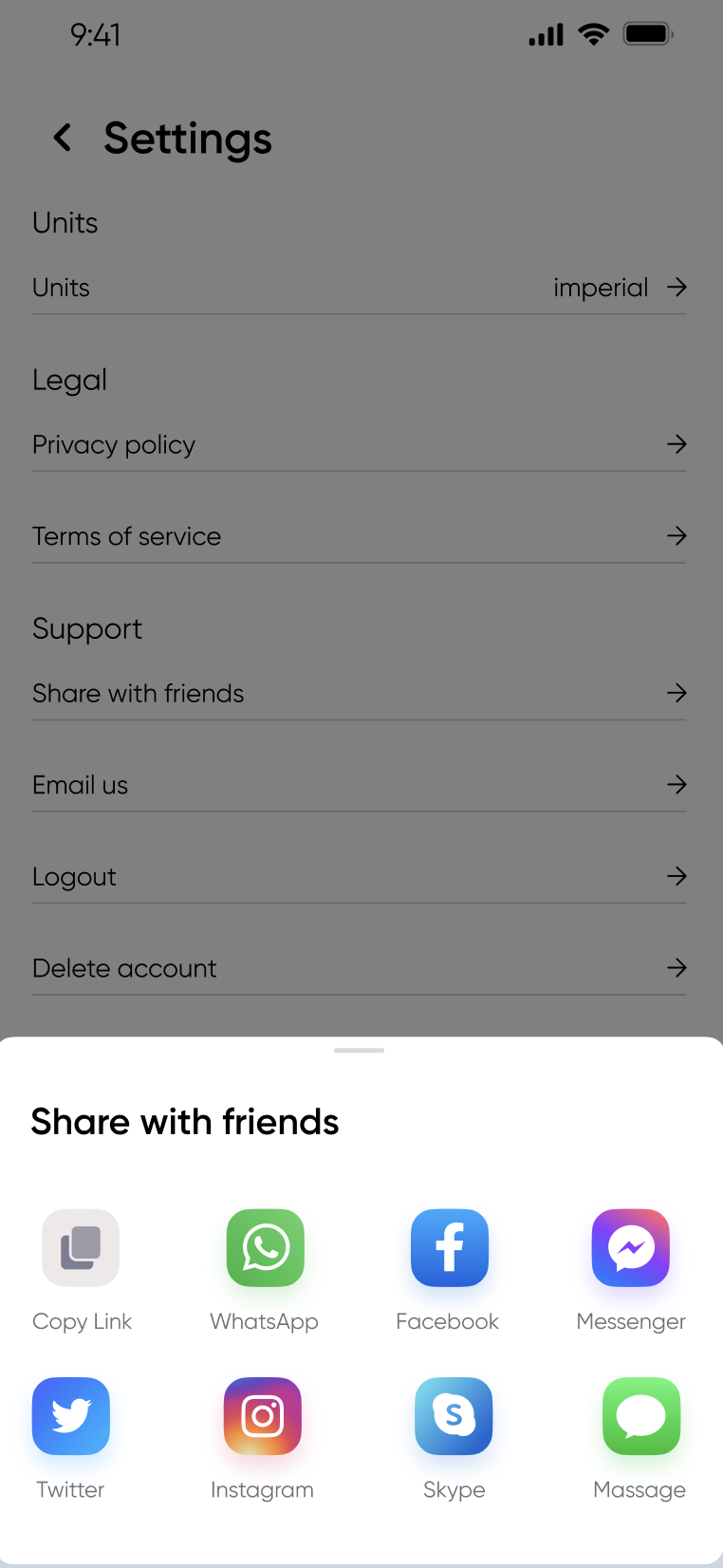Ski Mountain
Case Study
Ski Mountain App Development
Project Objectives
The primary goal of this project was to create a dual-platform mobile application compatible with both iPhone and Android devices. The application was designed to connect users with detailed information about ski mountains, utilizing data provided in an Excel file. The desired functionalities included comprehensive filtering and sorting features similar to those in the AllTrails app, user interaction components, user profile management, interactive maps, and a vibrant graphical interface—all designed to make navigating and selecting ski mountains an intuitive experience.
Challenges
Detailed Requirements and Specification Alignment:
Aligning the development process with the detailed and extensive specifications provided in the PowerPoint presentation proved to be challenging. Ensuring that every feature and small detail was incorporated as per the client’s expectation required meticulous attention and frequent revisions.
- Intensive Communication and Feedback Management:
Managing communication with the client, who was notably detailed in their feedback, and included multiple stakeholders (such as a minor and his father) added another layer of complexity. Promptly translating feedback into actionable changes within the tight project schedule necessitated an agile approach.
- Technical and Design Integrations:
The integration of various technical components, including React Native for cross-platform functionality, APIs for mapping, and user authentication with JWT, required seamless coordination between backend and frontend teams. Incorporating all these elements without compromising on the app’s performance and user experience was a significant challenge.
- Dynamic Filtering and Data Management:
Implementing dynamic filtering and sorting of ski mountain data based on numerous variables (such as distance, difficulty, region, elevation, etc.) and ensuring these features performed efficiently was complex. Moreover, managing the data provided in Excel format and integrating it into the backend without error required thorough testing and validation.
- UI/UX Considerations:
Creating a visually appealing and functional design that resonated with users while fulfilling the specified detailed requirements added to the design challenges. The UI components had to be not only intuitive and responsive but also adaptable across different devices and screen sizes.
Accomplishments
- Successful Dual-Platform Deployment:
The Ski Mountain App was successfully developed to run on both Android and iOS platforms using React Native, ensuring a consistent user experience across different devices.
- Enhanced User Interactivity:
The app included interactive map features, user profiles, favorites functionality, and detailed mountain information pages that allowed users to save preferences, submit reviews, and navigate through comprehensive mountain data seamlessly.
- Advanced Filtering and Sorting Capabilities:
Implemented sophisticated filter and sort functionalities that could handle multiple variables effectively, thus providing a rich user interface similar to benchmark apps like AllTrails.
- Integrative Design and Aesthetics:
Leveraging stock images and modern design standards, the development team ensured the application had a visually attractive interface that enhanced user experience. The designers incorporated snow imagery and relevant graphical elements to maintain thematic consistency.
- Comprehensive Backend Management:
A robust backend system was developed using Node.js and Express.js, backed by MySQL for relational data management. This facilitated smooth data handling and integration, ensuring the app’s dynamic features worked flawlessly.
- Continuous Testing and Feedback Integration:
The development process included rigorous testing across various devices using tools like Jest and Detox. Additionally, real-time feedback from the client was integrated continuously, ensuring alignment with initial specifications and prompt resolution of emerging issues.
- Effective Use of APIs:
Successfully integrated essential APIs, including Google Maps API for map functionalities and location services, which were critical to the app’s core features. The team also prepared the application for future updates and new integrations post-launch.
- Adaptability and User Settings:
The app supported multiple settings options including unit toggles (imperial/metric), user reviews moderation, and a customizable user interface, enhancing user satisfaction and adaptability across different user preferences.
This project exemplifies the success of collaborative efforts and agile project management, overcoming significant technical and communicative challenges to deliver a high-quality mobile application.

